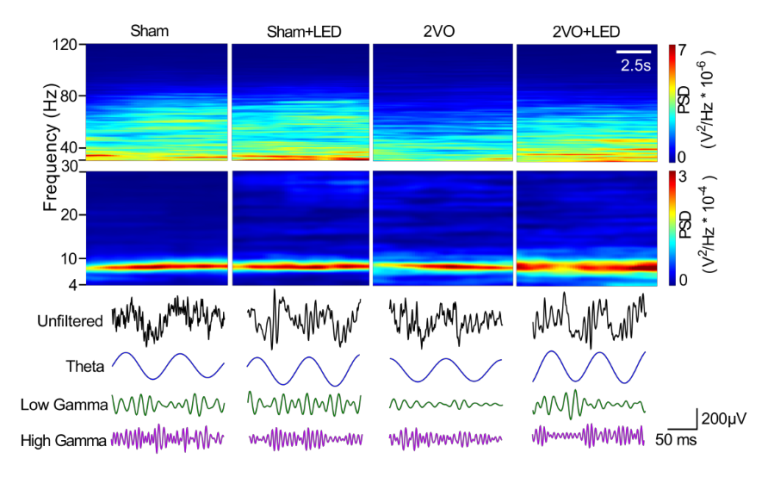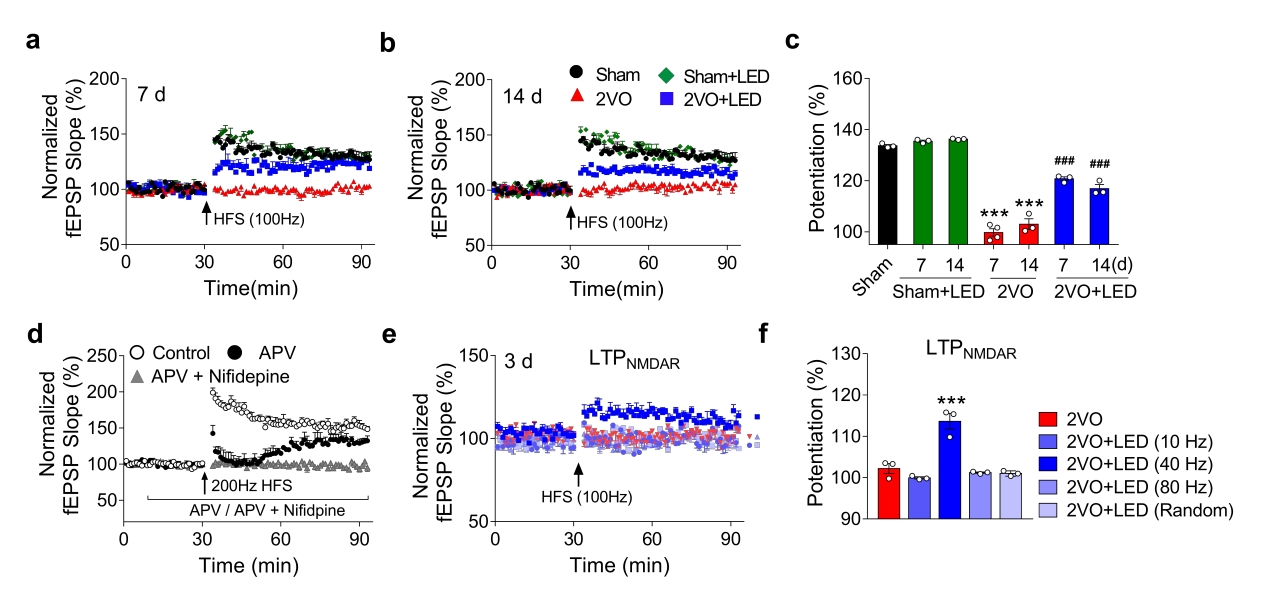New ways potentially found to treat and protect brain ischemia
2020-06-16
The structure and function of brain neural circuits are intensively investigated to shed light on the development of new ways for brain disease treatment. Researchers at Dept. of Biology, Southern University of Science and Technology (SUSTech) have made significant progress in the development of brain ischemia treatment.
On June 15, the research team of Professor Shengtao HOU (Biology) published a ground-breaking paper in the high-impact academic journal Nature Communications, under the title of “Rhythmic light flicker rescues hippocampal low gamma and protects ischemic neurons by enhancing presynaptic plasticity.”
The paper sought to discuss the changes in the oscillation frequency of the CA3-CA1 neural circuit of the hippocampus (a structure essential for learning and memory) of a mouse brain.

Brain ischemia is a condition where there is not enough blood flow to the brain and has been associated with deficits in neural oscillations. Previous studies had indicated that light has a substantial impact on biological rhythm, psychology, and physiology. As a result, it has been used as a treatment for various psychological and physiological maladies such as seasonal depression. After a severe lack of light in winter, people will have symptoms similar to depression, which will gradually disappear with the increase in sunshine time.
The researchers used an animal model to show that the modulation of low-gamma oscillations using a light flicker can restore low gamma oscillations and protect ischemic neurons. It was the first demonstration of brain wave changes during brain ischemia in conscious and free behaving mice performing a learning task.

It is currently unclear how light affects the structure and function of brain networks related to cognitive function. The researchers found that 30-40 Hz gamma frequency light entrain with the low-frequency gamma of the visual cortex and hippocampus. It leads to the increased intensity (power) of the local field potential within the gamma frequency range of the hippocampus. Low-frequency gamma light stimulation enhances the low-frequency gamma oscillation in the visual cortex and hippocampus. It also improves the release of neurotransmitters and enhances synaptic strength. Thus, it protects the neurons from damage caused by brain ischemia.
The paper indicates that there is a causal relationship between the hippocampal slow gamma and cognitive dysfunction in the ischemic brain. The findings may assist with the treatment of age-related brain diseases such as stroke and Parkinson’s disease
The co-first authors were senior research assistants Lifeng Zheng and Mei Yu. Professor Shengtao Hou was the correspondent author. Other contributions came from Professor Liping Wang at the Shenzhen Institute of Advanced Technology (CAS).
The research group was supported by grants from the National Natural Science Foundation of China; Shenzhen-Hong Kong Institute of Brain Science-Shenzhen Fundamental Research Institutions; Shenzhen Science and Technology Innovation Committee Research Grants; Natural Science Foundation of Guangdong Province; and Shenzhen Sanming Project. The team is also part of the Guangdong Innovation Platform of Translational Research for Cerebrovascular Diseases and SUSTech-UQ Joint Center for Neuroscience and Neural Engineering (CNNE). The team wishes to thank the Animal Core Facility and the Core Facility of SUSTech for providing technical supports.




